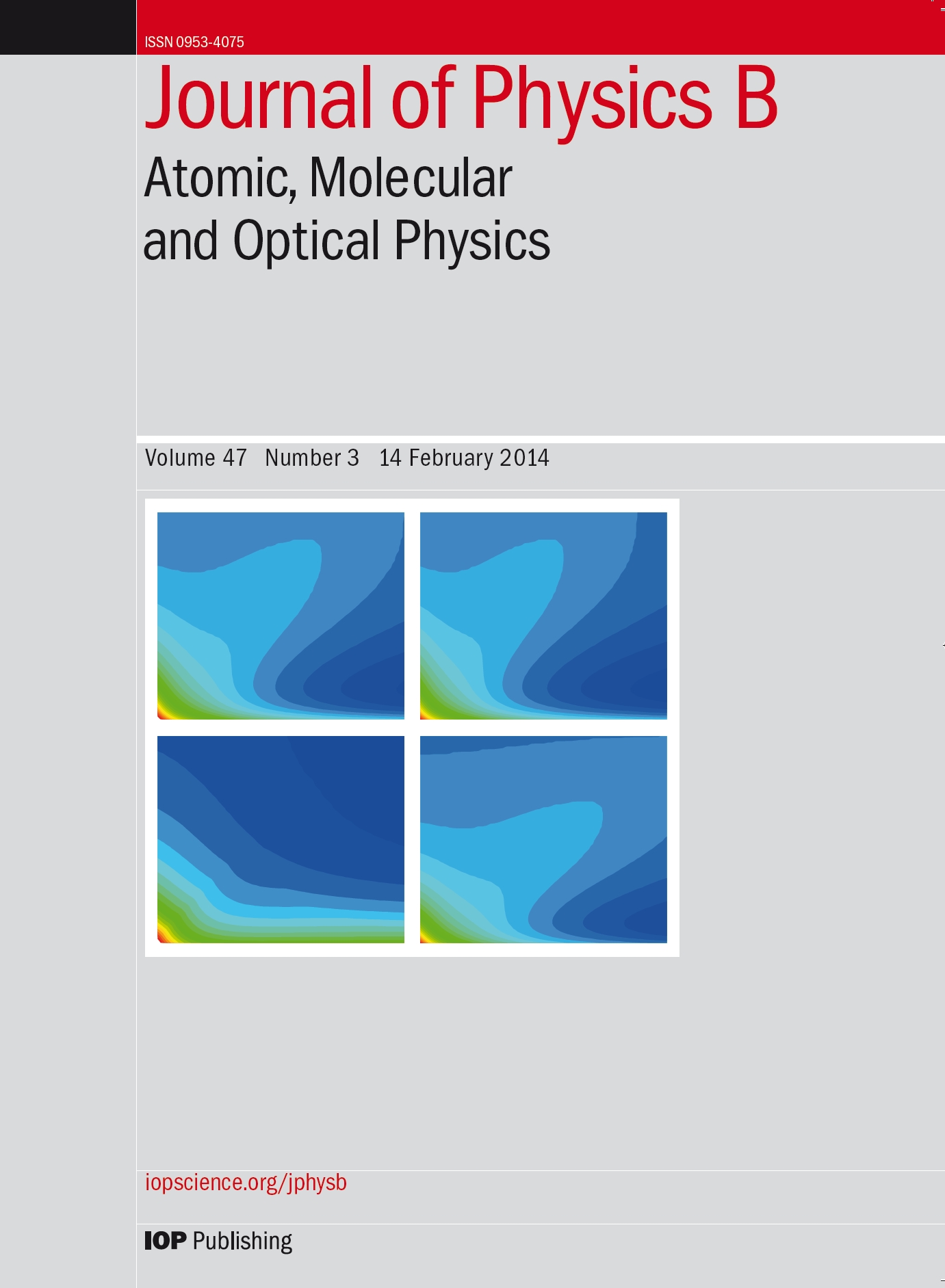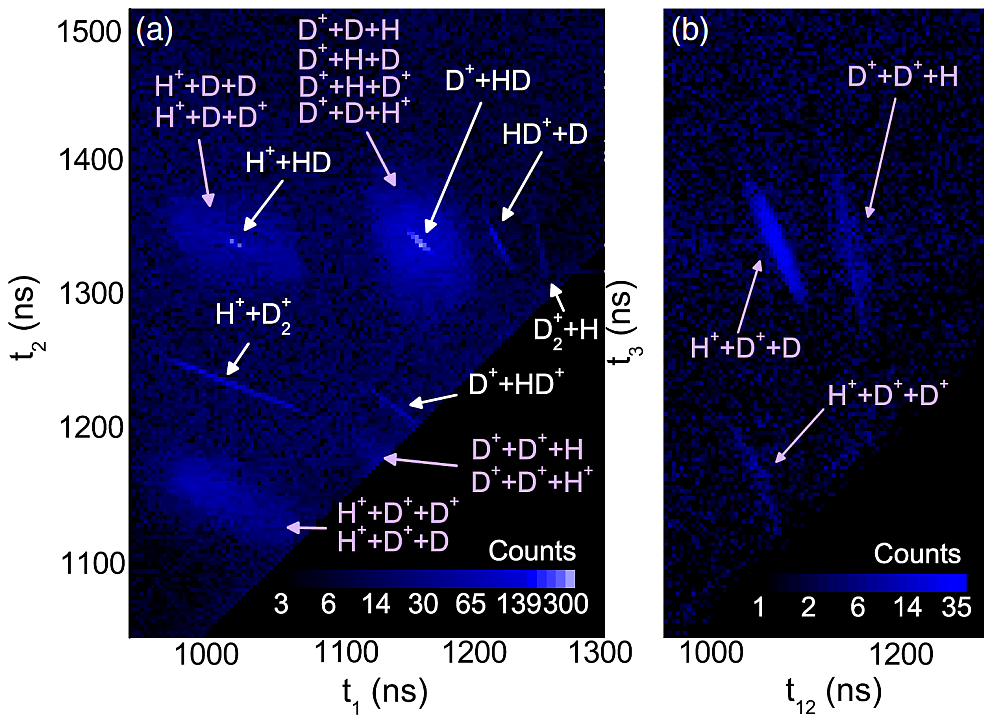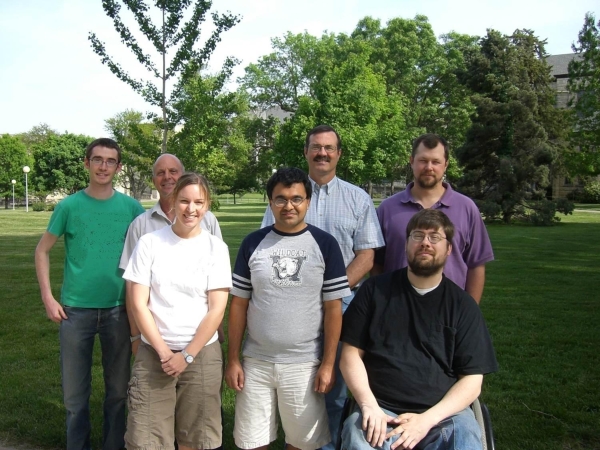 D2H+ exhibits isotopic effects in its strong-field fragmentation
D2H+ exhibits isotopic effects in its strong-field fragmentation
Using coincidence 3D momentum imaging, researchers from Kansas State University reveal that D2H+ has a propensity to favor certain fragmentation channels when subjected to intense ultrashort laser pulses.
As an important player in the chemistry of our universe, the triatomic hydrogen molecular ion has attracted much research interest over the years including infrared spectroscopy measurements, dissociative recombination studies and in astronomy. Recently, however, it has gained attention from the strong-field laser community since, being the most basic stable polyatomic molecule, it could be pivotal to our fundamental understanding of laser-driven molecular dynamics. Knowledge gained from this ‘simplistic’ system should help pave the way to a better understanding of the complex dynamics of larger molecules and lay down a benchmark for advancing theory.
Earlier experimental work in this direction explored for the first time the strong-field fragmentation of the H3 + and D3 + molecules. Now, new research achieves another milestone by tackling the isotopologue D2H+ (published in A M Sayler et al 2014 J. Phys. B: At. Mol. Opt. Phys. 47 031001). A figure from the paper was chosen as the cover image for the journal, as seen above. In many ways this member of the H3 + family could be considered more exciting than its counterparts as it naturally poses the question of whether there are any isotopic effects that arise due to the mass-asymmetry of the D2H+ ion. Indeed, this is the theme of the research presented by the authors as they seek to address this question.
Using a crossed-beams coincidence 3D momentum imaging method the authors are able to uniquely separate all the possible fragmentation channels of D2H+ in intense (up to 1016 W/cm2), ultrashort (7 and 40 fs) laser pulses, as shown in the figure. This enables them to look at the branching ratios of break-up channels differing by the isotope, such as D2H+fragmenting to D2 ++H or HD++D. Notably the authors report sizeable differences in some channels. For example, they show that for dissociative ionization there is a large difference (by more than a factor or five) in the branching ratios of the two-body channels, namely, H++D2 + dominates D++HD+. Other channels, particularly the dissociation channels H++D2 and D++HD, have little or no difference.
The authors visualize and qualitatively explain their findings based on the topology of the potential energy surfaces of this molecular system, using mass-scaled coordinates. Their explanations correlate with similar findings for electron-impact fragmentation of this molecular ion.
More details on this work are published in Journal of Physics B: Atomic, Molecular and Optical Physics.

Coincidence time-of-flight maps for D2H+ break-up illustrating the separation of fragmentation channels. Panel (a) shows raw data for the coincidence time-of-flight of two fragments hitting the detector (t2 arriving after t1) within the same laser shot, accumulated over many laser shots. Panel (b) shows the time-of-flight of the centre of mass of the first two fragments (t12) against that of the third fragment (t3).
About the authors
 The experiments presented in this work were carried out at the Department of Physics in Kansas State University, USA, under the leadership of Professor Itzik Ben-Itzik, who is the director of the J R Macdonald Laboratory, and through a long-term collaboration with Professor Kevin D Carnes. The other members of the group involved were A Max Sayler, Jarlath McKenna, Bishwanath Gaire and Nora G Kling. The group’s work is predominantly centered around studies of laser-molecular-ion interactions, collisional fragmentation experiments and attosecond science. This work benefited from the theoretical insight provided by Professor Brett D Esry. Find out
more information
about the research conducted at the J R Macdonald Laboratory.
The experiments presented in this work were carried out at the Department of Physics in Kansas State University, USA, under the leadership of Professor Itzik Ben-Itzik, who is the director of the J R Macdonald Laboratory, and through a long-term collaboration with Professor Kevin D Carnes. The other members of the group involved were A Max Sayler, Jarlath McKenna, Bishwanath Gaire and Nora G Kling. The group’s work is predominantly centered around studies of laser-molecular-ion interactions, collisional fragmentation experiments and attosecond science. This work benefited from the theoretical insight provided by Professor Brett D Esry. Find out
more information
about the research conducted at the J R Macdonald Laboratory.